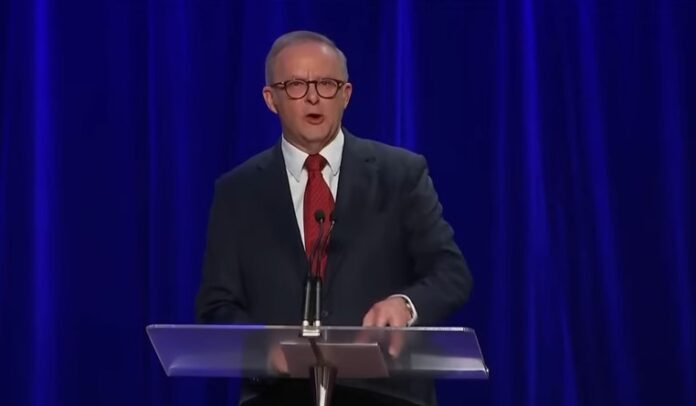Newsman: Australian prime minister Prime Minister Anthony Albanese has win the election and become the first Australian prime minister to win a second consecutive three-year term in 21 years .
Opposition leader Peter Dutton conceded defeat in Saturday’s election, saying, “We didn’t do well enough during this campaign, that much is obvious tonight, and I accept full responsibility for that.”
“Earlier on, I called the prime minister to congratulate him on his success tonight. It’s an historic occasion for the Labor Party and we recognise that,” he added.
The Australian Electoral Commission’s projections gave Albanese’s ruling center-left Labor Party 70 seats and the conservative opposition coalition 24 seats in the 150-seat House of Representatives, the lower chamber where parties need a majority to form governments. Unaligned minor parties and independent candidates appeared likely to win 13 seats. Labor held a narrow majority of 78 seats in a 151-seat House of Representatives. There will be 150 seats in the next parliament due to redistributions.
Energy policy and inflation have been major issues in the campaign, with both sides agreeing the country faces a cost of living crisis.
Peter Dutton Dutton’s conservative Liberal Party blames government waste for fueling inflation and increasing interest rates, and has pledged to ax more than one in five public service jobs to reduce government spending.
While both say the country should reach net-zero greenhouse gas emissions by 2050, Dutton argues that relying on more nuclear power instead of renewable energy sources such as solar and wind turbines would deliver less expensive electricity.
Labor argues Dutton’s administration would slash services to pay for its nuclear ambitions.
“We’ve seen the attempt to run American-style politics here of division and pitting Australians against each other and I think that’s not the Australian way,” Albanese said.
Albanese also noted that his government had improved relations with China, which removed a series of official and unofficial trade barriers that had cost Australian exporters 20 billion Australian dollars ($13 billion) a year since Labor came to power in 2022.
The election is taking place against a backdrop of what both sides of politics describe as a cost of living crisis.
Foodbank Australia, the nation’s largest food relief charity, reported 3.4 million households in the country of 27 million people experienced food insecurity last year.That meant Australians were skipping meals, eating less or worrying about running out of food before they could afford to buy more.
The central bank reduced its benchmark cash interest rate by a quarter percentage point in February to 4.1% in an indication that the worst of the financial hardship had passed. The rate is widely expected to be cut again at the bank’s next board meeting on May 20, this time to encourage investment amid the international economic uncertainty generated by Trump’s tariff policies.
Both campaigns have focused on Australia’s changing demographics. The election is the first in Australia in which Baby Boomers, born between born between the end of World War II and 1964, are outnumbered by younger voters.
Both campaigns promised policies to help first-home buyers buy into a property market that is too expensive for many.
The last time neither party won a majority, it took 17 days after the polls closed before key independent lawmakers announced they would support a Labor administration.

